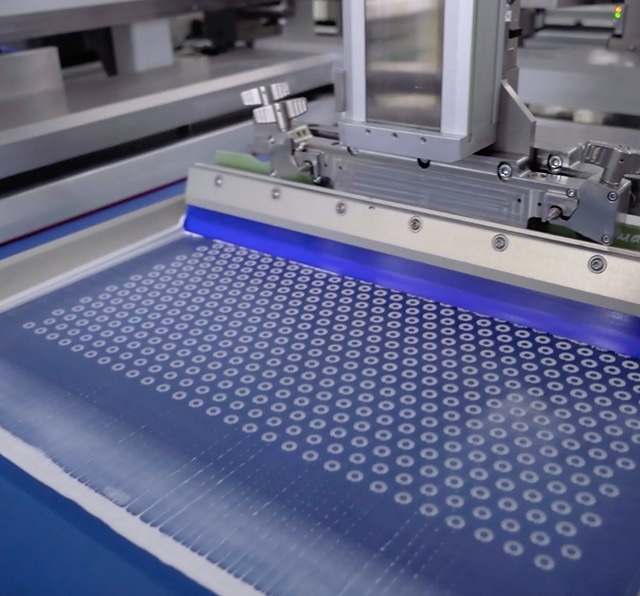Evonik Industries, Germany’s second-largest chemicals company, is announcing an investment by its venture capital arm in Nevada-based Laxxon Medical. The latter firm, which was founded in Switzerland in 2017 and relocated to the U.S. in 2021, has created a 3D screen printing technology specifically designed to produce time-release tablets that combine multiple ingredients in a single dose.
The partnership between the two companies entails a joint product development and cooperation agreement. To start, Evonik chemicals, specifically excipients — the inactive ingredients that serve as delivery systems for the active chemicals in prescription drugs — will be used in Laxxon’s printing pastes. Additionally, Evonik will manufacture pills for Laxxon.

In a press release, head of Evonik Venture Capital, Bernhard Mohr, said, “[Laxxon’s] technology is great for patients. We expect fewer side effects from a more controlled drug delivery and having fewer pills reduces the risk of forgetting doses during the day.” Thomas Riermeier, head of Evonik’s health care division, added, “Drug delivery is becoming more high-precision and increasingly targets specific patient groups. The collaboration with Laxxon will allow us to accelerate our activities in this important and emerging market.”
Although 3D printed medication was one of the most buzzworthy applications for the technology at the beginning of the industry’s 2010s growth period, a variety of obstacles have stood in the way of prescription 3D printing’s ability to gain traction. One issue has been the difficulty in achieving sufficient throughput to the point where an industry-wide transition towards additive manufacturing (AM) would make sense from a business perspective. In that respect, pharmaceuticals don’t differ much from other commercial industrial applications of AM, in terms of trying to figure out how the technology can potentially minimize costs. However, it might be more difficult for pharmaceutical companies to be convinced to adopt AM than most other industries, considering how astronomical the profit margins already are in the sector-at-large (at least in countries where the government still doesn’t negotiate for lower prices on consumers’ behalf).

The other, major issue the pharmaceutical industry faces is getting approval of regulators for new drugs. Since the first 3D printed prescription drug was approved by the FDA in 2015, not many more have gotten FDA approval. Clinical trials take a very long time, and again, with as much money at stake as there is, pharmaceutical companies — not famous for their benevolence — may not see the change as “worth it”, if customers are the only ones who stand to gain from such a shift.
Evonik is, of course, well-known in additive manufacturing as a pioneer in the development of nylon for selective laser sintering. More recently, it has branched out into a wider variety of polymers, including those for medical device manufacturing, and a wider variety of 3D printing processes. It has even invested in China’s largest stereolithography company. The fact that Germany’s second largest chemical company is so optimistic about the technology could certainly be a sign that there’s a big future for 3D-printed pharmaceuticals.
Images courtesy of Laxxon Medical.
Subscribe to Our Email Newsletter
Stay up-to-date on all the latest news from the 3D printing industry and receive information and offers from third party vendors.
You May Also Like
Profiling a Construction 3D Printing Pioneer: US Army Corps of Engineers’ Megan Kreiger
The world of construction 3D printing is still so new that the true experts can probably be counted on two hands. Among them is Megan Kreiger, Portfolio Manager of Additive...
US Army Corps of Engineers Taps Lincoln Electric & Eaton for Largest 3D Printed US Civil Works Part
The Soo Locks sit on the US-Canadian border, enabling maritime travel between Lake Superior and Lake Huron, from which ships can reach the rest of the Great Lakes. Crafts carrying...
Construction 3D Printing CEO Reflects on Being Female in Construction
Natalie Wadley, CEO of ChangeMaker3D, could hear the words of her daughter sitting next to her resounding in her head. “Mum, MUM, you’ve won!” Wadley had just won the prestigious...
1Print to Commercialize 3D Printed Coastal Resilience Solutions
1Print, a company that specializes in deploying additive construction (AC) for infrastructure projects, has entered an agreement with the University of Miami (UM) to accelerate commercialization of the SEAHIVE shoreline...





























